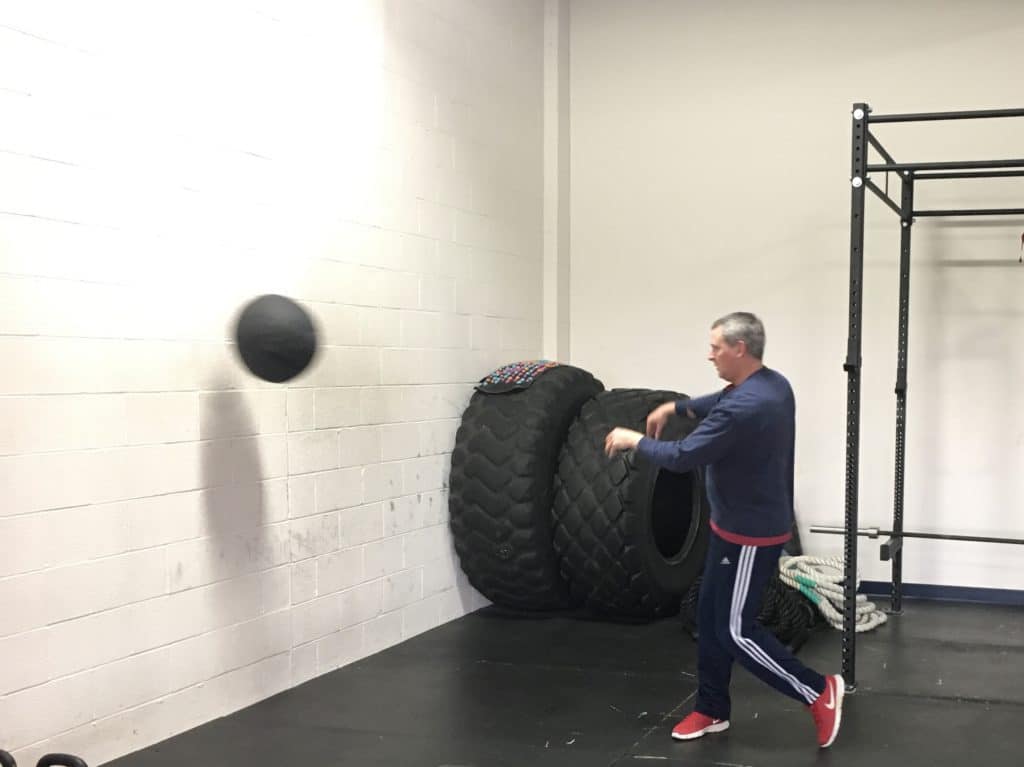When you think of the word “power,” what words pop into your head? Odds are that you thought of words like fast, strong, explosive, etc., and you’d be onto something. Or maybe you pictured things like a cheetah chasing its prey, or Usain Bolt running the 100 meter dash. Those are good examples of power too. Power is a quality that nearly every BSP NOVA member trains for in some capacity, and for good reason.
Regardless of your goals for exercising, whether that be for weight loss, strength gain, etc., becoming more powerful is going to benefit you. Plain and simple, being more powerful is better than being less powerful. And not only does being more powerful benefit you in the gym, but in your day to day life as well.
Before we dig into why power is important though, and how we train for it, let’s discuss what power is.

What is power?
For the sake of this post we can use the definition of power from physics, which is power = force x velocity (I know, super exciting stuff mentioning physics :0). This makes sense though that we think of words like “fast” or “strong” when thinking about power, because velocity and strength are components of power.
For a simpler, less boring explanation of power in our training, we can think of our intent with the exercise. Our intent is to be violently explosive when training to be powerful. When throwing an object, say a medicine ball for example, we throw as fast and hard as possible as if we’re trying to put a hole in the wall (more on intent and training later).
So, now that we have discussed what power is, why does it matter?

In the gym, being powerful and explosive benefits all aspects of our training. If I learn to throw a medicine ball explosively into a wall, then I not only learn to generate more power, but have a better understanding of how to move heavy weights quickly too. If I were to pull a heavy deadlift slowly for example, it would be much harder than it needs to be because I’m under tension longer. If I have trained for power though, then I better understand how explosively move that weight, which will make that lift easier since I’m not under tension as long.
Power helps us in our daily life too. It could help us move out of the way of an oncoming car, grab a glass that’s falling off the table, or catch ourselves stepping off a curb so we don’t twist our ankle. Power helps us to accomplish these daily activities more effectively and easily. It would also make playing sports, running with our kids, etc., easier and more enjoyable as well.

How to train for power
Now that we understand what power is and why it’s important, let’s discuss how we train for it.
There are numerous ways to train for power such as using Olympic lifts, plyometrics, kettlebells, sprints, etc. The most common method we use at BSP NOVA though, is medicine ball throws. Medicine balls are effective, easy to learn implements that are low risk (compared to Olympic lifts for example).
A caveat: medicine balls can and are used for more than just training for power, such as to train deceleration, force absorption, or for conditioning purposes. In this post though I’m going to focus using medicine balls for power specifically.
At BSP NOVA, we say that training = intent. If I’m training for power then that means I should be throwing the medicine ball explosively, not lightly tossing it.
TRAINING = INTENT
The same can be said about training for strength. It wouldn’t make much sense to have the intent of using as little weight as possible if I was trying to get stronger. When I’m training for power I’m trying to put a hole in the wall with each throw. Now, in the beginning, we can start off lightly throwing it as we get used to the technique, but as soon as we get the movement down, then we can crank up the velocity.
(Example of intent not matching goal of exercise)
Speaking of velocity, if our intent is to produce power, which means having high velocity, then we don’t need the heaviest medicine ball. For all BSP NOVA members we have them use the 4 pound medicine ball when doing their medicine ball throws. Our intent is to be violently explosive and if we go too heavy, then we’ll lose velocity and that defeats the purpose of what we’re training for. An exception would be using an 8 or 10 pound medicine ball for medicine ball slams, because gravity is assisting us in slamming it straight down.
As mentioned, medicine ball throws are relatively easy to learn but there is one tip that’s important to understand. That tip has to do with rotating our foot and hip when we do rotational throws.
One of the most important parts of rotational medicine ball throws is, well, having good rotation. When we throw the medicine ball we want our back foot to pivot (think heel faces away from wall) which causes our hip to rotate as well. A way of thinking of this is to imagine our back foot is “squishing the bug” under our foot. If we don’t do this then most of the rotation will occur in our lower back (as shown in the video below), which is stressing an area we don’t want to stress. Also, we want to be able to transfer power from our hips into our upper body as we throw, and not pivoting our back foot prevents this.
The videos below show some different variation of medicine ball throws we program, as well as how we can progress common ones we use.
Common Medicine Ball Throws:
The video below shows some common medicine ball throws that we use at BSP NOVA, but it is by no means an exhaustive list of all the exercises we use.
Example of Progressions Of Medicine Ball Throws:
Below is an example of how we take one medicine ball throw, the lateral medicine ball throw, and progress it. We use movement from the lower body to help generate more power in the throw.
Regardless of which medicine ball movement we program, if our goal or intent with the movement is to produce power, then we want to be violently explosive when performing it. Medicine ball throws aren’t the only means of training for power as mentioned, but they are a powerful implement for doing so. And regardless of what your goal with training is, you can’t go wrong being powerful.
